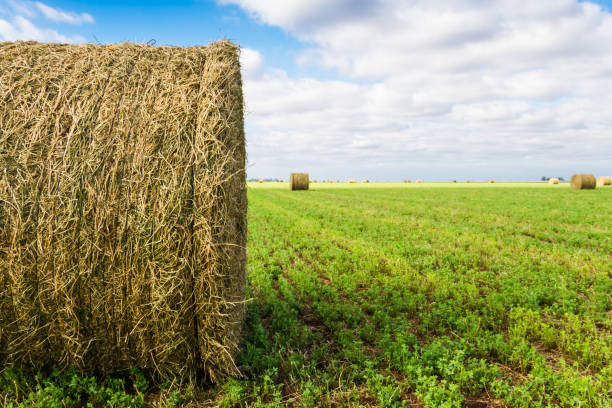
In preparation for alfalfa planting season, Farm Broadcaster, KC Sheperd, visited with Alex Rocateli, an OSU Extension Forage Systems Specialist, about alfalfa varieties, the upcoming planting season, and what will allow alfalfa to thrive this year.
“Make sure that you are getting alfalfa that has a winter survival rate of three and four, and the fall dormancy between four to six,” Rocateli said.
While it is hard to say the exact traits each producer should select for, Rocateli said that winter survival rate and fall dormancy will be the most critical.
“Make sure that if you are new in a location and you don’t know the type of pests and diseases that you have in your location that are very common, go to the coffee shop, talk with our county educators, try to learn and try to find an alfalfa variety that is resistant,” Rocateli said.
When farming a new area, Rocateli recommends doing your research before putting seed in the ground. He said that planting high-yielding varieties that don’t have resistance to the problems of your environment is often not worth it.
“Talking about Oklahoma, now is the time to start thinking about planting alfalfa most,” Rocateli said. “Most of the time when we talk about planting alfalfa, we think about, let’s say, the end of August, early September, or during the spring. I say much better that we do it now in the fall because we give right now the alfalfa time enough to develop and to begin before November the 31st.”
Rocateli said planting early in the fall, gives plenty of time to allow that alfalfa to grow before a frost and gives it a better chance at survival through the winter. He also recommends fall planting over the spring because it doesn’t have to compete with as many weeds or pests that flourish in the springtime.
Producers shouldn’t have any issue getting their hands on alfalfa seed in Oklahoma this year, according to Rocateli.
“Alfalfa demands lots of water,” Rocateli said. “It really demands the loss of water, but the success of alfalfa relies on the roots because alfalfa roots can really scavenger the soil very deep, five meters down, or even more.”
Three years of drought have been hard for such a water-demanding crop, like alfalfa, Rocateli said, but luckily, it has a very deep, robust root system. He described the role that the roots play as ‘magic’, allowing the alfalfa to continue growing on very little water because it is able to store so much.














